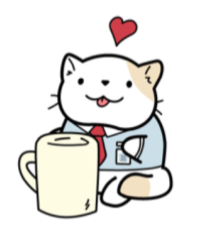Okay so I am back with a new update for you guys!
Being deployed at Sars have so far been a little slow due to the Corona, but still I have participated and learned making algae cultures to feed the animals, making artificial sea water used for experiments and done field work by collecting the animals. But before explaining some spicy details, what do actually the Sars center do and what does it consist of?
So short, the Sars center is a research center using molecular techniques to study development in marine organisms, most often in an evolutionary context. The Sars center is located at the facilities of the Bergen High Technology Centre at Marineholmen and consists of 8 research groups and their group leader, which is chosen for a limited time for 6+4 years were the group leader obtain the funding for the research project and have access to the infrastructure at the Sars center.
One of the groups is the Chatzigeorgiou group which I am deployed at during this professional practice. The Chatzigeorgiou group is studying the evolution and function of the nervous system in urochordates, also called tunicates. Here the tunicate Ciona Intestinalis is used as a model organism to find answers to two primarily questions:
Interested in reading more? Check out these to URL links for further details about the Sars center (https://www.uib.no/en/sarssenteret) and not at least the Chatzigeorgiou group`s research (https://www.uib.no/en/sarssenteret/114771/chatzigeorgiou-group).
Did I mention spicy details? Ofc! So, to have something to work with at the lab we need to collect the animals (the Ciona). This is done at the Bildøy marina, located at Sotra. This is approximately a 20 min drive from the Sars center. So, with a hand net, a scrape (looks like a big fork) and a couple of buckets we could collect the animals, which is often attached to bedrocks and boulders, but also at artificial surfaces such as metal and concrete. Factors that also have an impact on their location are the exposure of waves and the water flow. Here Ciona prefer low waves and some water flow.
I must say that thinking about collecting these animals sounded a little strange at first, thinking about how to do it, where to find them and which clothes I were supposed to use. Luckily, I got quickly answers to that. The clothing, hehe I think that was sort of the difficult one due to the changing weather here in Bergen, if you know what I mean. Where to find the animals, that made more sense when I arrived at the marina and began to look along the pier edges, the metal chains stabilizing the piers and along ropes which stretched down into the water. Really fascinating looking at the clusters of animals bundled together just hanging there, chilling a little before we came interrupting their privacy. Collecting them wasn`t that difficult actually. Picture me laying on the pier, stomach down, orange glows on and a hand net in my hand fishing for some Ciona. Just got to say, what a view, hehe. Felt like a game where you needed to collect as much animals as possible before they sink down into the unknown. Yes, I lost some, but in the end, we filled up our 4 buckets with animals and headed back to the Sars center.
Typical that the one day I was joining collecting animals, the weather changed from glorious sun to snow and lurid wind, but still happy and warm.
This is only the beginning and I am learning more each day at the practice host. The upcoming weeks I will be working with more molecular techniques which I am really looking forward to, so stay tuned for that!
Again, thank you for reading and hope to see you soon in my next blog post!
– Eilen



Those were indeed some spicy details!
More details to come in my next blogpost!<3